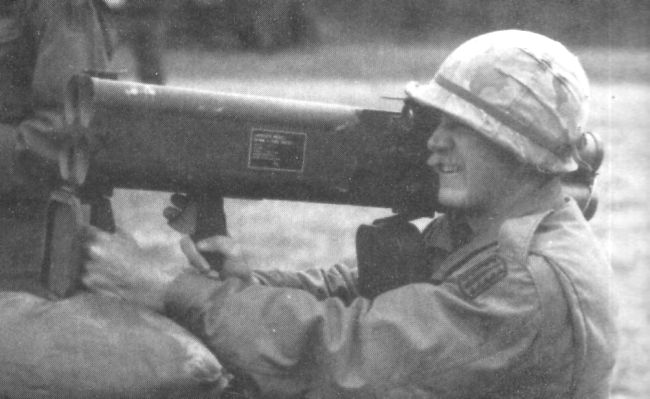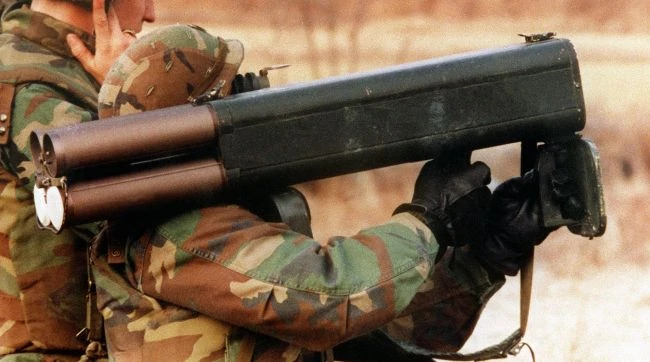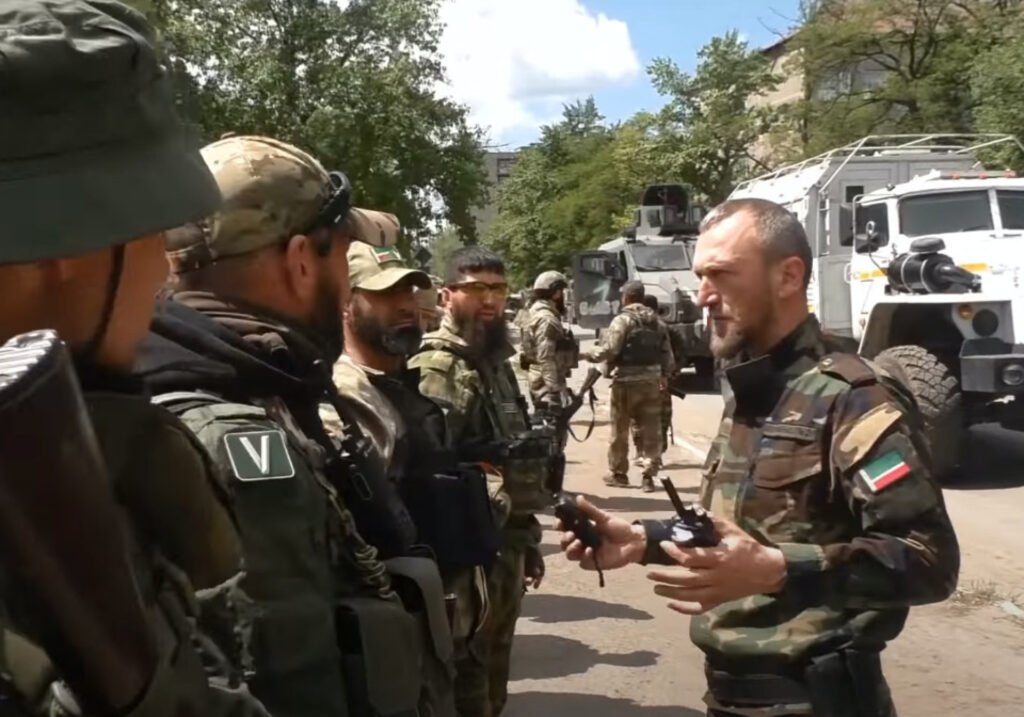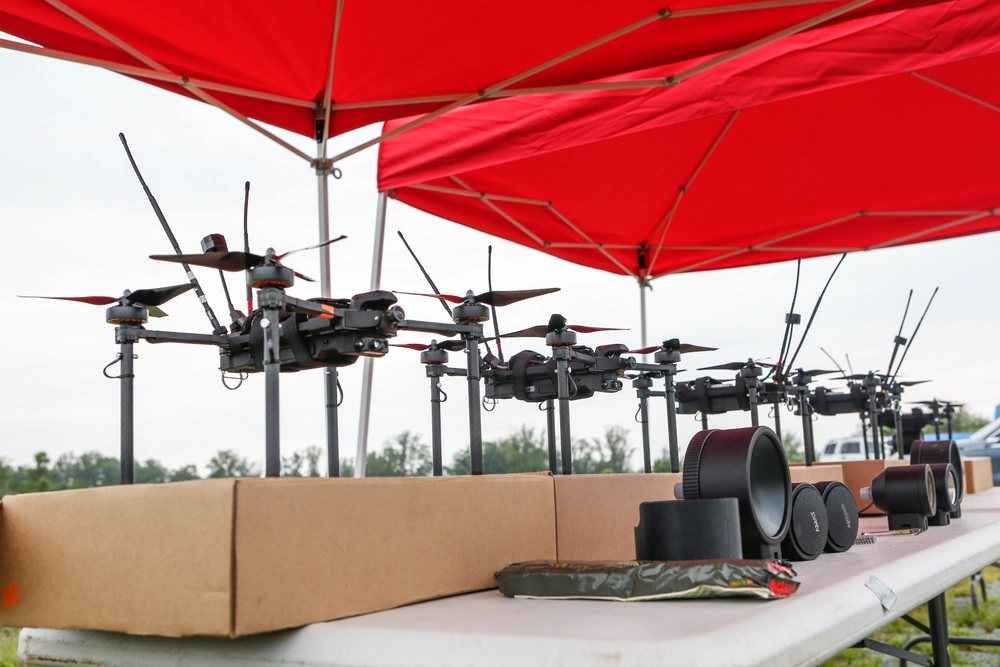The M202 FLASH – A deadly rocket-propelled flamethrower
- By Travis Pike
Share This Article

Flamethrowers are brutal but effective weapons. They can clear caves, bunkers, and buildings fairly efficiently and act as excellent antipersonnel weapons. This was made pretty clear during World War II, especially in the Pacific against Japanese pillboxes. However, flamethrowers have their problems: their effective range is about 15 meters, and a fully loaded M2 flamethrower weighs 72 pounds! But what if you had a weapon that threw flames but farther while being lighter? Well, if that’s the case, you need the M202 FLASH.
Enter the M202 FLASH
FLASH stands for Flame Assault Shoulder. The M202 FLASH is a quad-barrel rocket launcher that fires a warhead full of thickened pyrophoric agents. It’s a rocket-propelled flamethrower, to put it simply. This four-barrel weapon weighs 26.6 pounds when loaded and has an effective range of 820 yards on an area target and 219 yards on a point target. If you need to set something on fire that’s really far away, the FLASH is for you.

From a practical accuracy standpoint, it was found troops armed with the M202 FLASH could land a shot at 50 meters through a bunker’s small window and up to 125 meters on a building window. On crew-served weapon positions and stationary vehicles, the FLASH could hit targets at 200 meters and on a squad-sized formation at 500 meters.
That’s a good bit further than the old M2 flamethrower. Plus, the FLASH offered four shots. If you’ve ever seen the best action movie ever, Commando, then you likely remember Arnold shooting a four-barreled rocket launcher out of a convertible. That’s the M202 FLASH.
Related: The best war movies and shows (according to a Marine machine gunner)
A short history of the M202
The M202 FLASH came from the XM191, an experimental rocket-propelled flamethrower that was first tested in Vietnam. The XM202 used a 66mm rocket and was based around the LAW launcher that had been popular and effective in Vietnam. However, it was found lacking leading to the development of the M202. The design of the FLASH began in 1970, but the weapon wasn’t produced until 1978, so it missed the Vietnam War entirely.
Alongside the FLASH’s thickened pyrophoric agent rockets, designers developed a CS crowd-control option and flirted with the idea of an anti-armor option. However, neither of these loads was ever fielded.
How the M202 FLASH worked

The M202 FLASH came in two pieces: the launcher, and four round clips. The user would carry the launcher unloaded until it was needed at which point an A-Gunner would load the weapon for the shooter. When not in use, FLASH basically a big rectangle as its front and rear flaps close, and the trigger folds into the gun, making it easier to carry.
An optical sight allowed the user to aim the weapon, but due to the sight’s placement, it could only be fired with the right hand. Interestingly enough, users could pick between two fire modes, making this the only selective fire, man-portable rocket launcher I’m aware of. Shooters can choose between a semi-auto mode that launches one rocket per trigger pull or a second setting that fires all four rockets at once.
The rockets are armed at distances of between five and 14 meters, but you never want to be that close to a target when using the M202 FLASH as the thickened pyrophoric agent burned at a temperature between 1,200 and 2,000 degrees Celsius.
The M202 FLASH could be quite dangerous to users. If the rockets broke open, a flame would instantly ignite, so soft handling is a good idea. If the rocket hit something before it armed, it could still crack and ignite. Plus, like any rocket launcher, the weapon has a backblast area that could be quite dangerous.
Related: The military needs to ditch the world’s most dangerous duty holster
In the field
Both the Army and Marine Corps adopted the M202 FLASH, not as general-issue items but more or less as needed. In the Marine Corps, the infantry assaultman carried the weapon, and the Army typically had enough to arm one man per infantry platoon.
These weapons were designed primarily for anti-bunkers and personnel use, with some effectiveness against light vehicles. Although it fires rockets, the FLASH was not designed to be an anti-armor weapon. Even though could make a tank button-up, and potentially score a mobility kill by hitting a weaker part of the vehicle that role would be much better filled by something like the LAW.
The M202 FLASH never really got its day in the sun. They were taken to Afghanistan, but it’s unclear if they were ever used. I imagine they could clear caves well, but they are not weapons with any form of discretion. They are indiscriminate killers, and in guerilla warfare, a degree of precision prevents civilian casualties.
The M202 FLASH might not have rocked worlds, but the phrase rocket-propelled flamethrower might be my new favorite military phrase.
Read more from Sandboxx News
- The ‘Greatest Beer Run Ever’ could have been a much better Vietnam movie
- Letters to Loretta: The American POWs are not broken despite their losses
- What are rifle grenades and are they still relevant?
- The history and evolution of the flak jacket
- The Bailey Machine Gun pioneered belt-fed gun designs 150 years ago
Related Posts
Sandboxx News Merch
-

‘AirPower’ Classic Hoodie
$46.00 – $48.00Price range: $46.00 through $48.00 Select options This product has multiple variants. The options may be chosen on the product page -

‘Sandboxx News’ Trucker Cap
$27.00 Select options This product has multiple variants. The options may be chosen on the product page -

‘Kinetic Diplomacy’ Bumper Sticker (Black)
$8.00 Add to cart

Travis Pike
Travis Pike is a former Marine Machine gunner who served with 2nd Bn 2nd Marines for 5 years. He deployed in 2009 to Afghanistan and again in 2011 with the 22nd MEU(SOC) during a record-setting 11 months at sea. He’s trained with the Romanian Army, the Spanish Marines, the Emirate Marines, and the Afghan National Army. He serves as an NRA certified pistol instructor and teaches concealed carry classes.
Related to: Gear & Tech

Energy drinks were the unsung hero of the Global War on Terror

How hand-to-hand combat training in the US military has evolved

Russia has been trying a tactic of ‘a thousand cuts’ in Ukraine

The benefits of drones for the Marine Corps
Sandboxx News
-

‘Sandboxx News’ Trucker Cap
$27.00 Select options This product has multiple variants. The options may be chosen on the product page -

‘AirPower’ Classic Hoodie
$46.00 – $48.00Price range: $46.00 through $48.00 Select options This product has multiple variants. The options may be chosen on the product page -

‘AirPower’ Golf Rope Hat
$31.00 Select options This product has multiple variants. The options may be chosen on the product page -

‘Sandboxx News’ Dad Hat
$27.00 Select options This product has multiple variants. The options may be chosen on the product page
